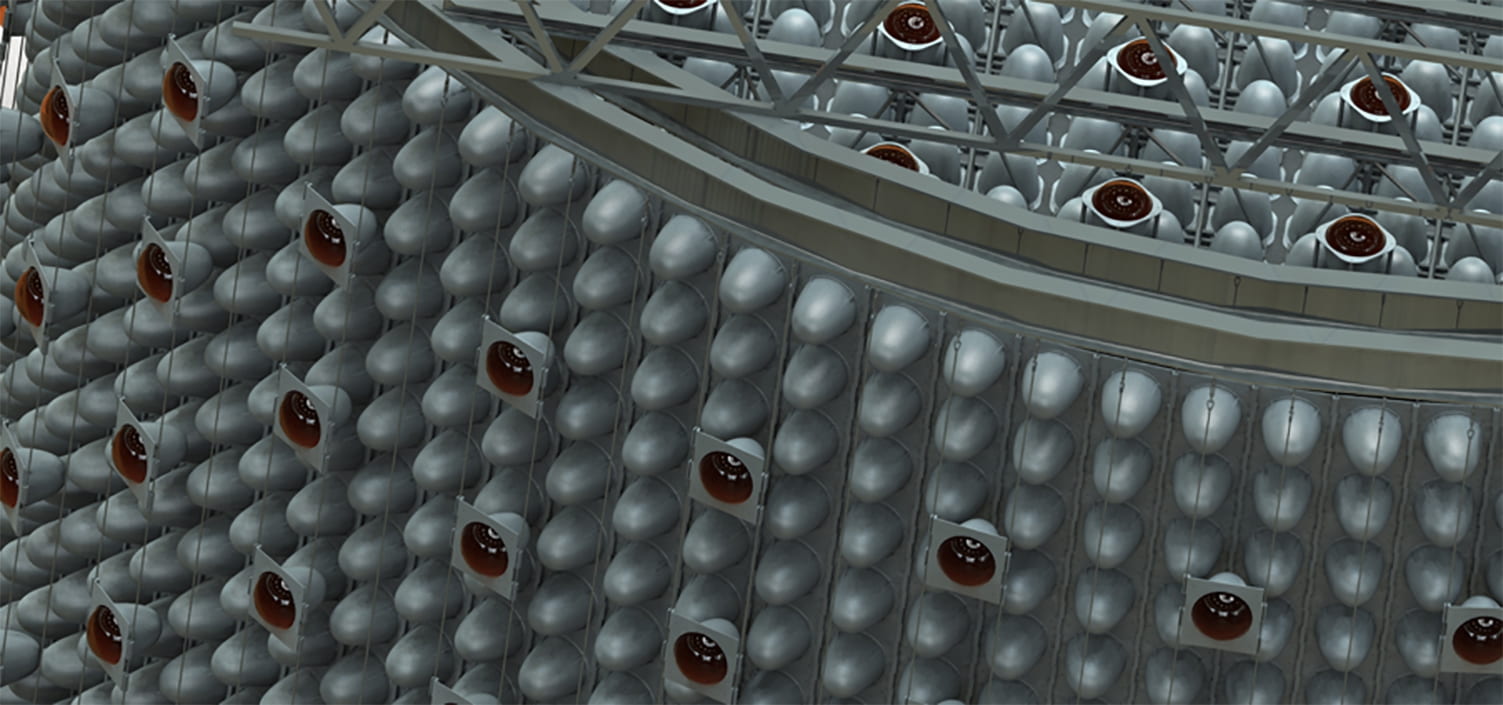UCI to play key role in innovative nuclear nonproliferation initiative
US-UK consortium to test use of antineutrino detector in monitoring reactors

Irvine, Calif., March 27, 2018 – Harnessing the unusual characteristics of elusive subatomic particles known as antineutrinos, the University of California, Irvine will play a key role in a nuclear nonproliferation research collaboration between U.S. and U.K. laboratories and universities.
Sponsored by the U.S. Department of Energy’s National Nuclear Security Administration and managed by Lawrence Livermore National Laboratory, the Advanced Instrumentation Testbed initiative will foster the development of detection hardware and algorithms to improve nuclear security.
“Nuclear reactors produce vast numbers of antineutrinos; they are the only type of reactor emission that cannot be shielded or attenuated. But they can be detected. Therein lies an opportunity,” said AIT co-spokesman Mark Vagins, UCI professor of physics & astronomy.
“The purpose of the testbed is to demonstrate the capability to detect the operations of nuclear reactors at significant distances using antineutrino emissions,” said LLNL physicist and AIT principal investigator Adam Bernstein.
“Since the Nobel Prize-winning discovery of neutrinos by Frederick Reines and Clyde Cowan using a reactor source in the late 1950s, scientists have spent more than 60 years exploring their curious properties,” said Vagins. “Now, after four separate neutrino Nobel Prizes in four consecutive decades [in 1988, 1995, 2002 and 2015], it’s time to see if we can put these fascinating particles to work.”
Carrying no electric charge and much less mass than electrons, neutrinos – and antineutrinos, their antimatter counterparts – interact only very weakly with normal matter. As a result, they can travel through solid objects without slowing down or stopping.
UCI has been at the forefront of neutrino research since its inception: Reines – the neutrino’s co-discoverer – was founding dean of the campus’s School of Physical Sciences. He assembled an impressive faculty, with members participating in some of the most consequential experiments in the history of neutrino and particle physics. Some have measured neutrinos in and above the Antarctic ice.
For the first phase of AIT, called WATCHMAN, a 3,500-ton detector is expected to be built at the site of the Boulby Underground Laboratory, an existing U.K. government-funded science facility operating in a working potash, polyhalite and salt mine on the northeast coast of England.
Slated to become operational in about 2023, the water-based detector will monitor antineutrino emissions from Britain’s Hartlepool nuclear power station from 25 kilometers away – demonstrating a new, scalable technology suitable for the much larger detectors needed to monitor or discover reactors hundreds of kilometers away.
Its technical goal will be to observe operations and detect antineutrinos using water doped with the rare-earth element gadolinium. A neutron capture agent, gadolinium greatly enhances a water-based detector’s sensitivity to antineutrinos, which generate neutrons by interacting with protons in the water.
Monitoring of this type may be of use in agreements and treaties that call for tracking or restricting the production of fissile materials that could be utilized in nuclear weapons.
“Long-distance reactor sensing for nonproliferation would be the first practical application of neutrinos to solve a real-world problem,” Vagins noted, “and what’s more, since these are antineutrinos, they would represent only the second type of antimatter – after the positrons in PET scanners – to get a day job.”
The WATCHMAN detector, once commissioned, will not just monitor reactors. It will become one of only a few such apparatuses worldwide capable of detecting antineutrino bursts from supernova explosions anywhere in the Milky Way galaxy.
“This innovative project represents a coming together of two disparate research communities, scientific and nuclear nonproliferation, for the benefit of both,” Vagins said. “One has to imagine that Frederick Reines would be amused by the new yet familiar frontiers his old research group at UCI is currently exploring.”
About the University of California, Irvine: Founded in 1965, UCI is the youngest member of the prestigious Association of American Universities. The campus has produced three Nobel laureates and is known for its academic achievement, premier research, innovation and anteater mascot. Led by Chancellor Howard Gillman, UCI has more than 30,000 students and offers 192 degree programs. It’s located in one of the world’s safest and most economically vibrant communities and is Orange County’s second-largest employer, contributing $5 billion annually to the local economy. For more on UCI, visit www.uci.edu.
Media access: Radio programs/stations may, for a fee, use an on-campus ISDN line to interview UCI faculty and experts, subject to availability and university approval. For more UCI news, visit wp.communications.uci.edu. Additional resources for journalists may be found at communications.uci.edu/for-journalists.